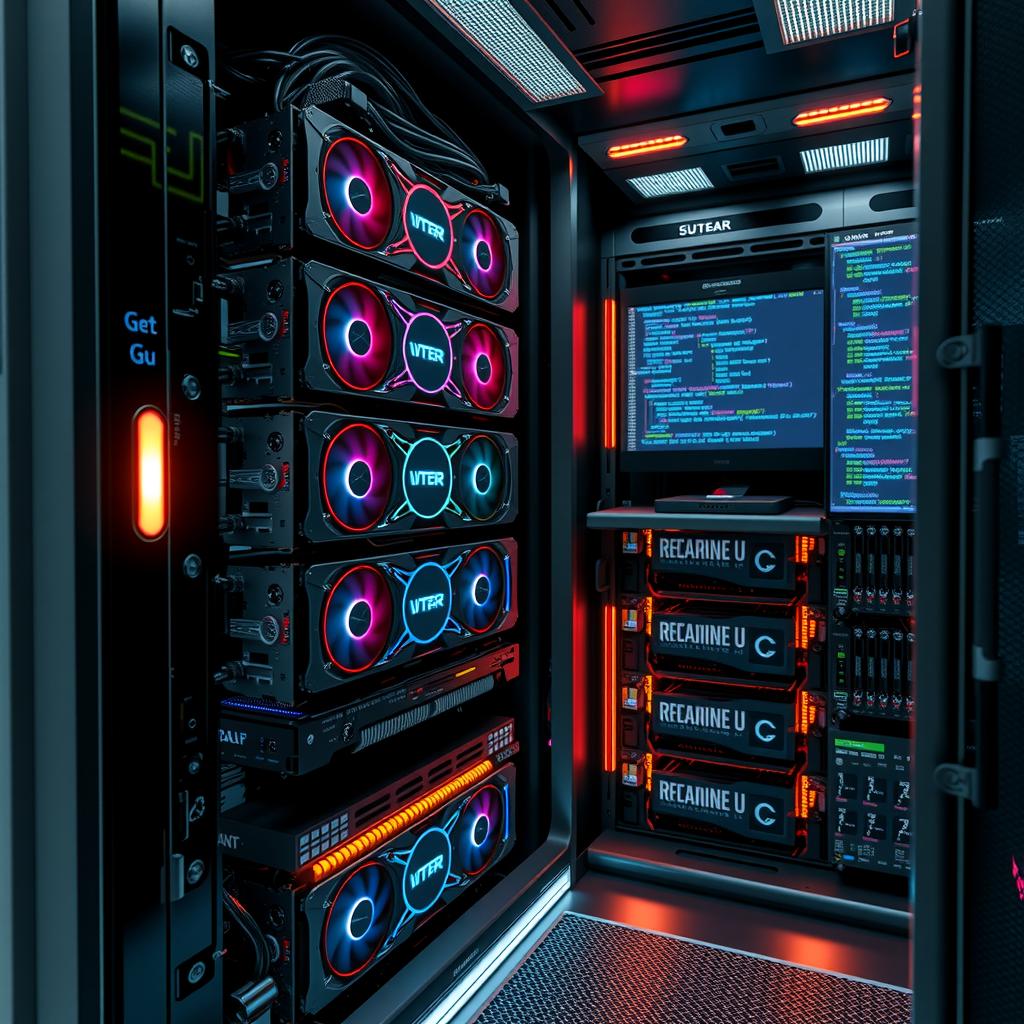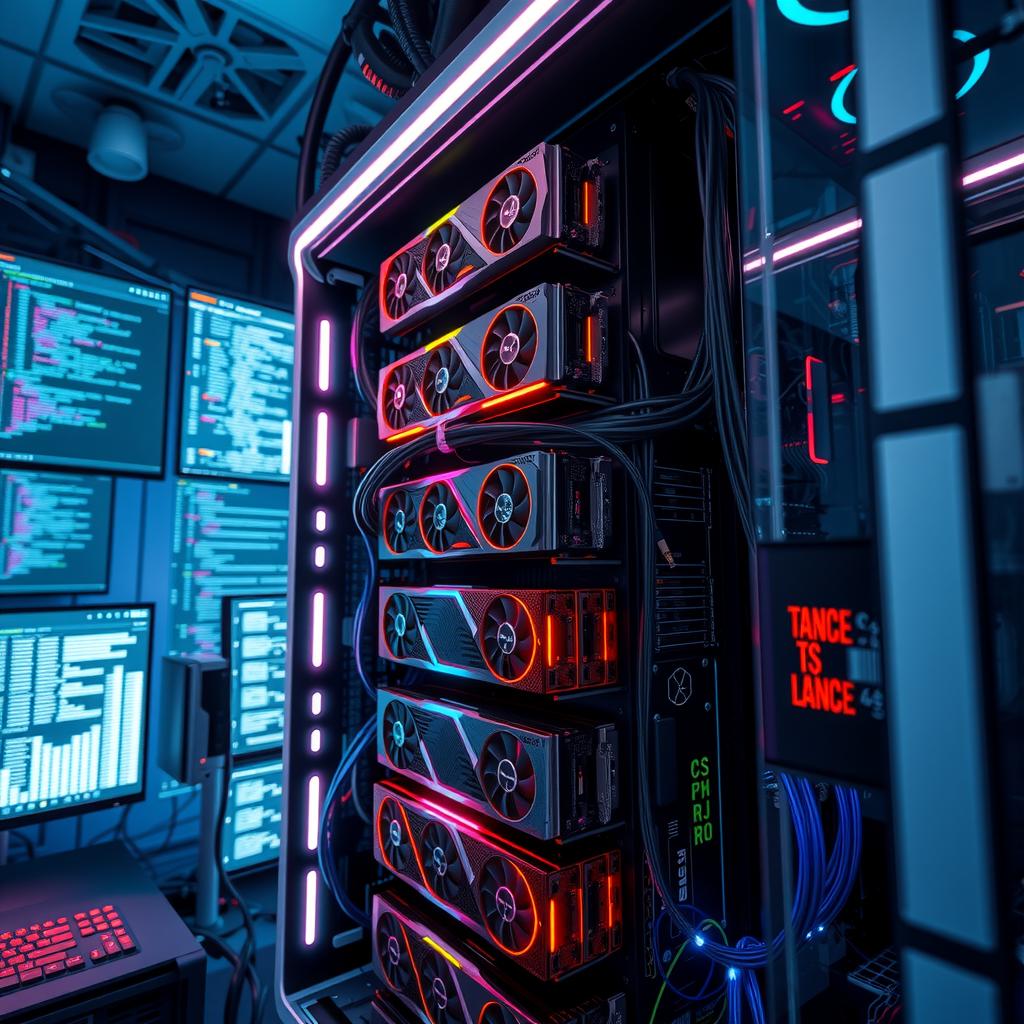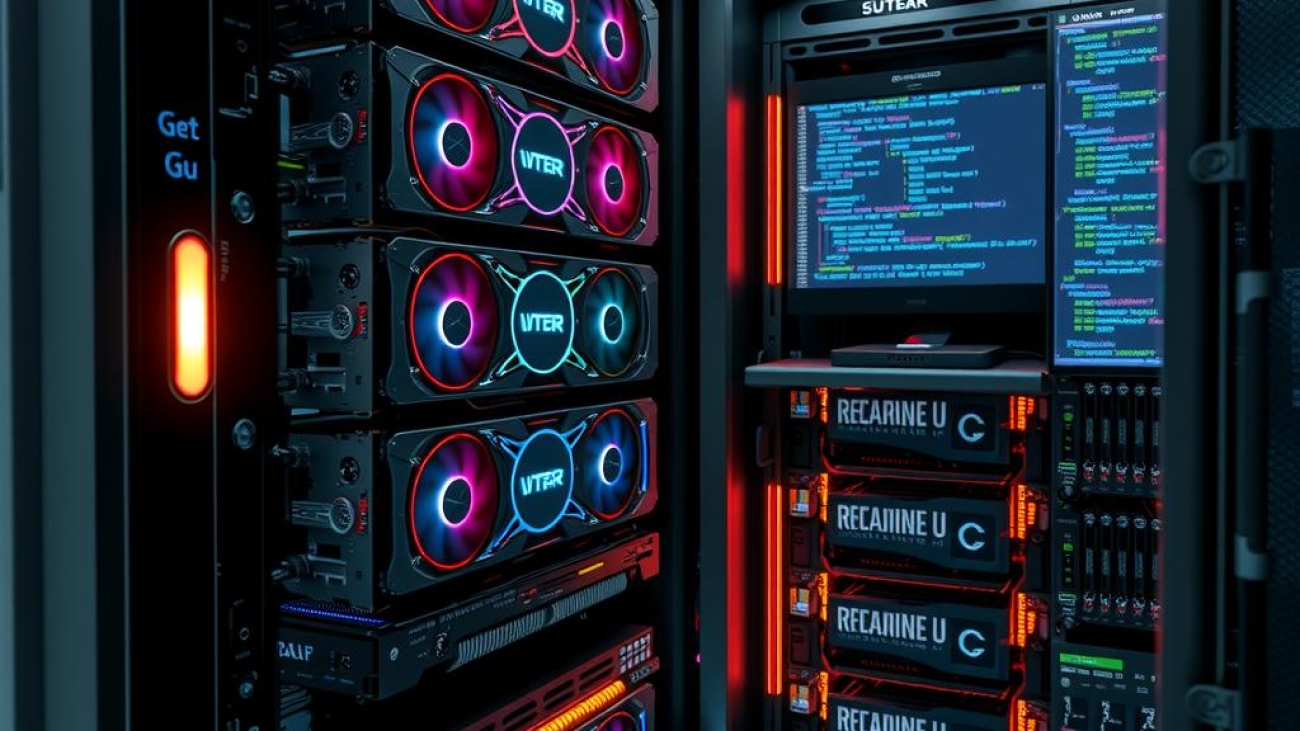In the rapidly evolving landscape of machine learning and deep learning, the demand for efficient computation has never been higher. As datasets grow in size and complexity, relying on a single GPU for training can significantly hinder performance optimization and scalability solutions. This challenge becomes particularly evident when enterprises seek to enhance their models’ accuracy while reducing training time. Enter the world of multi-GPU setups—an innovative approach that allows researchers and developers to harness the power of parallel computing, dramatically accelerating distributed training processes.
The core value of establishing a multi-GPU environment lies in its ability to distribute workloads across multiple graphics processing units, enabling simultaneous computations. This not only maximizes resource utilization but also opens new avenues for implementing advanced deep learning techniques that require substantial computational power. By leveraging such an infrastructure, practitioners can tackle extensive datasets more efficiently, achieving results previously thought unattainable within reasonable timeframes.
However, setting up this multi-GPU configuration is no trivial task; it involves navigating various challenges related to hardware compatibility, software dependencies, and network configurations. The intricacies involved may deter many from tapping into these powerful systems despite their potential benefits. Fortunately, with proper guidance on how to structure your setup environment effectively—from choosing appropriate frameworks that support distributed training to optimizing inter-GPU communication—achieving high-performance results becomes much more accessible.
This article aims to demystify the process of configuring a multi-GPU environment specifically designed for distributed training, allowing readers to understand each step involved while equipping them with practical insights along the way. As they delve into this guide, practitioners will uncover strategies that promote not just effective implementation but also sustainable scaling practices essential for future machine learning endeavors. Readers are encouraged to explore how they too can transform their workflows by embracing these advanced capabilities in parallel computing as we journey through this essential setup process together.

Key Insights:
-
Understanding Hardware Requirements: Establishing a robust multi-GPU environment for distributed training begins with understanding the necessary hardware components. Users must consider factors such as GPU memory, processing power, and interconnect bandwidth to ensure optimal performance. Selecting compatible GPUs that can effectively communicate via high-speed connections will enhance overall system efficiency.
-
Configuring Software Environments: The next step involves setting up the right software infrastructure to facilitate seamless operation across multiple devices. This includes installing appropriate libraries and frameworks designed for parallel computing, which support features like data parallelism and model synchronization. Proper configuration is crucial for maximizing resource utilization in machine learning tasks.
-
Implementing Best Practices for Communication: Efficient communication between GPUs is vital for achieving maximum speedup during training processes. Implementing strategies such as gradient accumulation or collective communication methods ensures that all devices are synchronized effectively, minimizing idle time and enhancing scalability solutions within deep learning projects. By adhering to these best practices, users can significantly boost their models’ performance optimization capabilities while navigating complex datasets efficiently.

The Significance of Multi-GPU Configurations in Machine Learning
Unlocking the Power of Distributed Training for Enhanced Performance
In the realm of machine learning, achieving remarkable results hinges significantly on computational efficiency and speed. This is where multi-GPU setups come into play, serving as a critical component in modern AI development. With the increasing complexity and size of datasets, traditional single-GPU configurations often fall short of meeting performance demands. Multi-GPU environments enable parallel computing, allowing multiple graphics processing units to work collaboratively on large-scale tasks. This collaboration not only accelerates data processing but also enhances the model training process through efficient distributed training strategies that leverage vast resources effectively.
The architecture surrounding these multi-GPU setups fosters scalability solutions that are instrumental for organizations looking to optimize their workflows. By distributing workloads across several GPUs, practitioners can tackle substantial models and extensive datasets without encountering bottlenecks typically associated with limited computational power. Moreover, deep learning techniques benefit immensely from such architectures; they require significant memory bandwidth and computation capabilities to handle operations like backpropagation efficiently across numerous layers in neural networks. As a result, businesses can harness improved accuracy levels while reducing time-to-market for their machine learning applications.
Optimizing Performance Through Efficient Setup Environment
Building a Robust Framework for Enhanced Parallel Computing
Creating an efficient setup environment is paramount when considering multi-GPU configurations for distributed training within machine learning frameworks. A well-structured system allows seamless communication between GPUs, ensuring optimal utilization of resources throughout various stages of model development and deployment processes. Techniques such as data parallelism—where each GPU processes different subsets of data simultaneously—are essential in maximizing throughput during training sessions without compromising overall performance metrics.
Furthermore, integrating high-speed interconnects like NVLink or InfiniBand can significantly reduce latency issues inherent in communication between GPUs during parallel computations. Such enhancements are crucial as they facilitate faster synchronization among devices involved in model updates—a vital aspect when dealing with real-time or near-real-time data scenarios common in many industries today. Additionally, software frameworks designed specifically for leveraging multiple GPUs provide intuitive interfaces that streamline configuration settings tailored towards specific use cases within machine learning projects.
In conclusion, understanding the multi-GPU landscape emphasizes its role not just as a luxury but rather as a necessity within today’s competitive environment focused on innovation through artificial intelligence advancements.
Setting Up Your Multi-GPU Environment
Essential Considerations for Hardware and Software Configuration
When embarking on the journey of setting up a multi-GPU environment, it is crucial to pay close attention to both hardware and software components. The selection of appropriate hardware is foundational in ensuring optimal performance during distributed training processes. Factors such as GPU architecture, memory bandwidth, and interconnect technology must be considered. For instance, using GPUs from the same family can significantly enhance communication efficiency between them. This coherence minimizes latency issues that often arise when different GPU architectures are employed together. Furthermore, one should also evaluate power supply requirements; high-performance GPUs demand substantial power which necessitates an adequately rated power supply unit (PSU). In addition to physical connections like PCIe slots, investing in motherboards designed with multi-GPU capabilities will facilitate better airflow and thermal management—critical aspects for sustaining effective parallel computing operations.
Equally important is configuring the software environment effectively to leverage the advantages offered by multiple GPUs in machine learning tasks. To achieve seamless communication between GPUs, utilizing frameworks specifically optimized for deep learning techniques, such as TensorFlow or PyTorch, becomes essential. These frameworks provide built-in support for managing data distribution across devices efficiently while simplifying implementation complexities associated with multi-GPU configurations. Moreover, ensuring that drivers are updated regularly helps avoid compatibility issues that could hinder performance optimization efforts during model training sessions.
Incorporating scalability solutions into this setup enhances its robustness against future demands as projects evolve over time. With well-implemented load balancing strategies within distributed systems architecture, users can dynamically allocate resources based on workload requirements without experiencing significant downtimes or bottlenecks in processing speed—a common drawback when handling large datasets typical of contemporary machine learning applications.
Lastly, continuous monitoring tools play a pivotal role in maintaining the health of a multi-GPU environment post-setup stage by providing real-time insights into system performance metrics such as temperature levels and utilization rates across all active units involved in computations. Such vigilance allows practitioners not only to optimize their ongoing workflows but also ensures longevity within their deployed infrastructures—ultimately leading towards enhanced productivity gains reflective of modern advancements within artificial intelligence domains reliant upon sophisticated computational paradigms.
Best Practices for Optimization
Enhancing Training Efficiency through Strategic Approaches
In the realm of machine learning, particularly when dealing with deep learning techniques, maximizing training efficiency is paramount. One effective strategy to achieve this is through data parallelism. This approach allows multiple GPUs to process different batches of data simultaneously, significantly reducing the time required for model convergence. By distributing the workload across several devices, practitioners can leverage their hardware’s full potential. However, it’s essential to implement proper synchronization techniques to ensure that all GPUs are updated consistently after each iteration. Techniques such as synchronized stochastic gradient descent (SGD) can help maintain coherence among the models being trained on different processors.
Another vital aspect to consider in optimizing training processes involves setting up an appropriate environment tailored for distributed training. The configuration must support efficient communication between nodes while minimizing latency and overhead costs associated with data transfer. Tools like NVIDIA’s NCCL (NVIDIA Collective Communications Library) facilitate high-performance communication patterns and should be integrated into any multi-GPU setup for optimal results.
Practical examples abound where organizations have successfully implemented these strategies with outstanding outcomes in terms of performance optimization and scalability solutions. For instance, a tech company might utilize a cluster of eight GPUs configured in a distributed system architecture to train complex neural networks faster than single-GPU setups could ever manage. By experimenting with various batch sizes and learning rates during hyperparameter tuning sessions—while employing advanced techniques such as mixed-precision training—they often discover even further enhancements in efficiency without sacrificing model accuracy.
Moreover, it’s crucial that practitioners remain aware of how adjustments made during optimization may affect overall model performance metrics over time; monitoring tools can aid immensely here by providing real-time insights into resource utilization and bottlenecks within the workflow—ensuring that teams can pivot strategies as necessary based on empirical evidence rather than assumptions alone.
Ultimately, adopting best practices centered around both parallel computing methodologies and robust environments not only enhances operational efficiencies but also accelerates innovation cycles within deep learning projects—leading organizations towards cutting-edge advancements more swiftly than they might otherwise anticipate possible under traditional frameworks alone.
Frequently Asked Questions:
Q: What are the key hardware requirements for setting up a Multi-GPU environment?
A: When establishing a Multi-GPU setup for Distributed Training, it is essential to consider several hardware components. Users should ensure that their system has sufficient PCIe lanes to accommodate multiple GPUs, along with an adequate power supply unit (PSU) that can handle the collective power consumption. Additionally, having a motherboard designed for multi-GPU configurations and sufficient cooling solutions will significantly enhance performance optimization during extended training sessions.
Q: How do I configure software settings for effective Distributed Training across multiple GPUs?
A: To optimize your Setup Environment for distributed training, it’s crucial to select appropriate frameworks that support Parallel Computing, such as TensorFlow or PyTorch. These platforms provide built-in functionalities to facilitate communication between devices and manage resource allocation efficiently. Moreover, users should pay attention to driver versions and library dependencies; ensuring compatibility will prevent potential bottlenecks in processing speed.
Q: Can you explain the concept of data parallelism in relation to Multi-GPU setups?
A: Data parallelism is a fundamental technique used in Deep Learning Techniques where the same model architecture is replicated across different GPUs but with distinct batches of data being processed simultaneously. This approach allows users to leverage the computational power of multiple devices effectively, leading not only to accelerated training times but also enhanced scalability solutions as larger datasets can be handled more efficiently compared to single GPU setups. Understanding this concept is vital for anyone looking to maximize their machine learning projects’ capabilities through advanced GPU configurations.
